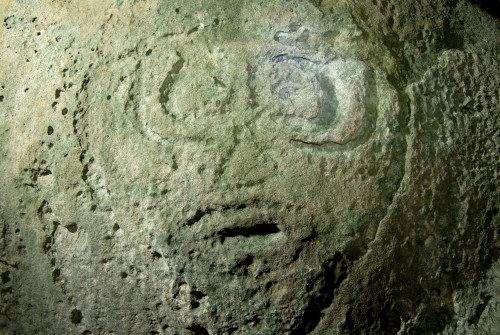The Cave Painting of Dori Gra
by Kevin Z. Garvey

40,118 BCE
By Neanderthal standards, Dori Gra was the picture of perfection. His thick, matted hair had a luster not found in other males of his species. His wide face was wider than most, and his low forehead lower. Such were his good looks that a famed Neanderthal cave painter traveled miles to paint Dori’s portrait on the walls of a well-protected Siberian limestone cave.
Dori was delighted to be the artist’s muse. This artist had been the first to combine charcoal, burnt bones and calcite with animal fat to make paint, taking the concept of art to a higher level. His color palette was far superior to the usual ochre hues that dominated the period. Thus, he was able to bring life to the cave portrait of Dori Gra.
The location Dori had chosen for the painting was deep within the cave, in his own private alcove. Once the work was finished, Dori studied it, mesmerized. The likeness was uncanny. It was like looking into a reflecting pool. He admired the painting with joy in his heart.
But soon his mood turned melancholy. The painting, he realized, would remain young forever, gracing the cave for thousands of years. But he, Dori Gra, would grow old, wither and die. Oh, how unfair that was! How wrong! He wished there was some way to reverse the process, to make the painting age instead of him.
But there was nothing he could do. His frustration was profound. He became enraged.
So great was his anger that he summoned the artist back into the alcove and smashed his head with a stone. It was an ugly act. And highly unusual for a Neanderthal. Murder was a crime virtually unheard of among their people.
At first, Dori felt bad about his deed. But then he noticed something. The portrait. Its expression was no longer calm and serene. It was twisted, as if with rage.
Something was happening here. Something strange. Could it be, Dori wondered, that he’d gotten his wish?
Dori called another man into the alcove, a man he disliked. He killed that man as he had killed the artist. And when he looked upon the painting, the face was even more contorted than before.
As time passed, Dori Gra realized that his wish had indeed come true. The painting was aging, not him. He began living a life of debauchery and violence, taking what he wanted, and caring little for the suffering of others. With each immoral act, the painting became more grotesque. The broad face narrowed, the low forehead grew higher, and the thick hair became less coarse. The portrait was turning into something monstrous before his eyes.
After several centuries, Dori Gra, still young and handsome, began to feel guilty about his crimes. He’d watched generations of his fellow Neanderthals age and die while he remained vibrant. But he was an outsider, feared and loathed by all. Eventually, he came to loathe himself–and the portrait that had caused him to become such a monster.
Grabbing a torch, Dori Gra decided to destroy the cursed work of art. But before he could inflict any damage, his strength left him. He suddenly felt weak and feeble. The painting was changing, too. It was reverting back to its original form. But soon, Dori was too weak to even keep his eyes on it. He slumped to ground.
And there, alone in the alcove, Dori Gra, now ancient and decrepit, died.
***
2021 CE
Reuters
Archeologists exploring a limestone cave in Siberia have made a startling discovery. Inside a hidden alcove that has remained unexplored for tens of thousands of years, researchers discovered a wall painting of a Neanderthal man. The cave painting is remarkably well preserved, and shows the Neanderthal’s face in extraordinary detail.
Even more startling are the skeletal remains found in the alcove. Radiocarbon dating shows the bones to be at least forty thousand years old. But unlike other bones discovered in the area, this skeleton is not Neanderthal. It is homo sapiens.
The finding has sent shockwaves throughout the scientific community. Homines sapientes were not believed to have inhabited this region for another five thousand years.
“How this lone specimen found its way into the cave is a mystery,” said a researcher at the scene. “One that may never be solved.”
